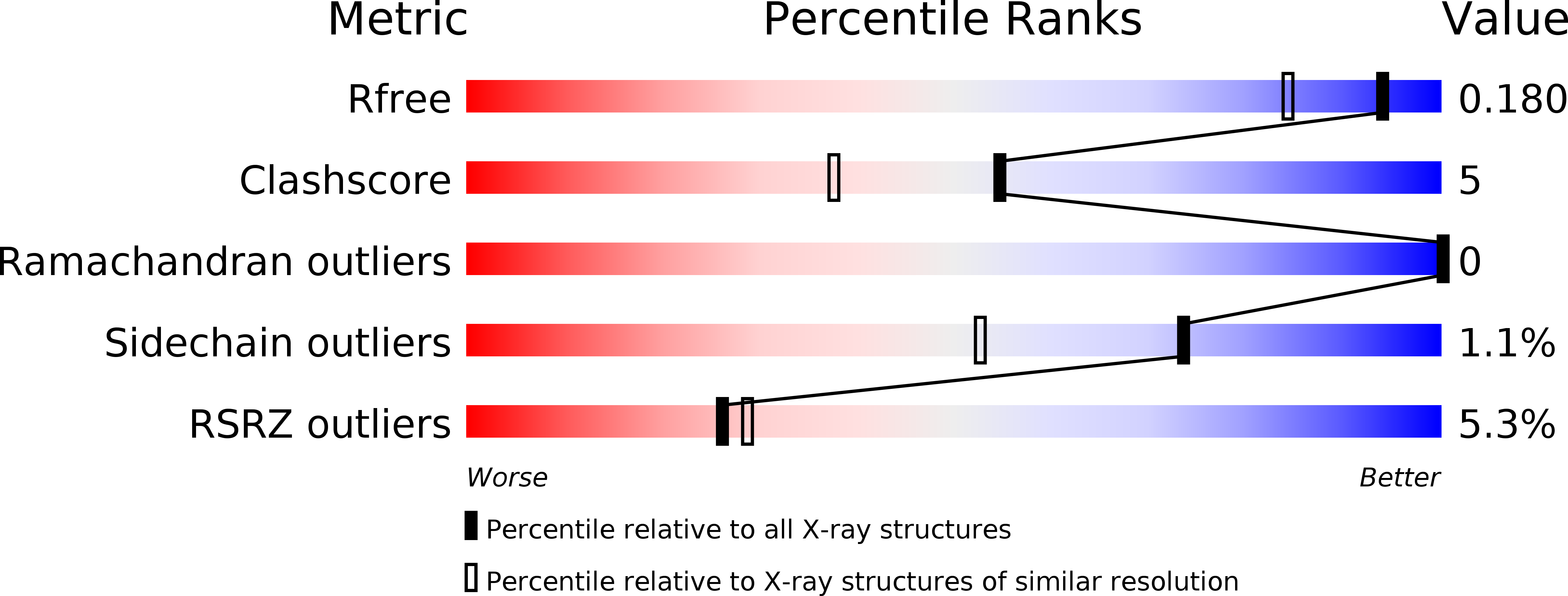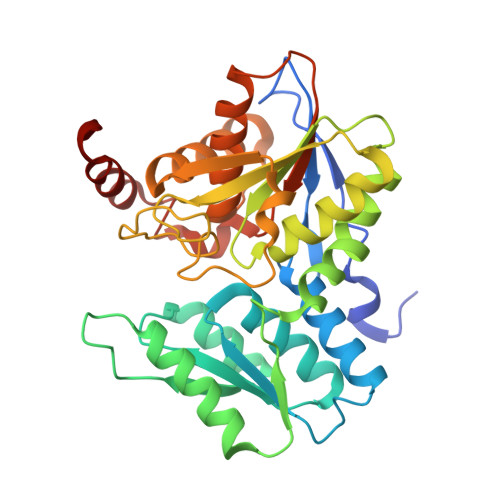Deciphering the Substrate Specificity of SbnA, the Enzyme Catalyzing the First Step in Staphyloferrin B Biosynthesis.
Kobylarz, M.J., Grigg, J.C., Liu, Y., Lee, M.S., Heinrichs, D.E., Murphy, M.E.(2016) Biochemistry 55: 927-939
- PubMed: 26794841
- DOI: https://doi.org/10.1021/acs.biochem.5b01045
- Primary Citation of Related Structures:
5D84, 5D85, 5D86, 5D87 - PubMed Abstract:
Staphylococcus aureus assembles the siderophore, staphyloferrin B, from l-2,3-diaminopropionic acid (l-Dap), ¦Á-ketoglutarate, and citrate. Recently, SbnA and SbnB were shown to produce l-Dap and ¦Á-ketoglutarate from O-phospho-l-serine (OPS) and l-glutamate. SbnA is a pyridoxal 5'-phosphate (PLP)-dependent enzyme with homology to O-acetyl-l-serine sulfhydrylases; however, SbnA utilizes OPS instead of O-acetyl-l-serine (OAS), and l-glutamate serves as a nitrogen donor instead of a sulfide. In this work, we examined how SbnA dictates substrate specificity for OPS and l-glutamate using a combination of X-ray crystallography, enzyme kinetics, and site-directed mutagenesis. Analysis of SbnA crystals incubated with OPS revealed the structure of the PLP-¦Á-aminoacrylate intermediate. Formation of the intermediate induced closure of the active site pocket by narrowing the channel leading to the active site and forming a second substrate binding pocket that likely binds l-glutamate. Three active site residues were identified: Arg132, Tyr152, Ser185 that were essential for OPS recognition and turnover. The Y152F/S185G SbnA double mutant was completely inactive, and its crystal structure revealed that the mutations induced a closed form of the enzyme in the absence of the ¦Á-aminoacrylate intermediate. Lastly, l-cysteine was shown to be a competitive inhibitor of SbnA by forming a nonproductive external aldimine with the PLP cofactor. These results suggest a regulatory link between siderophore and l-cysteine biosynthesis, revealing a potential mechanism to reduce iron uptake under oxidative stress.
Organizational Affiliation:
Department of Microbiology and Immunology, Life Sciences Institute, The University of British Columbia , Vancouver, British Columbia, Canada V6T 1Z3.

















